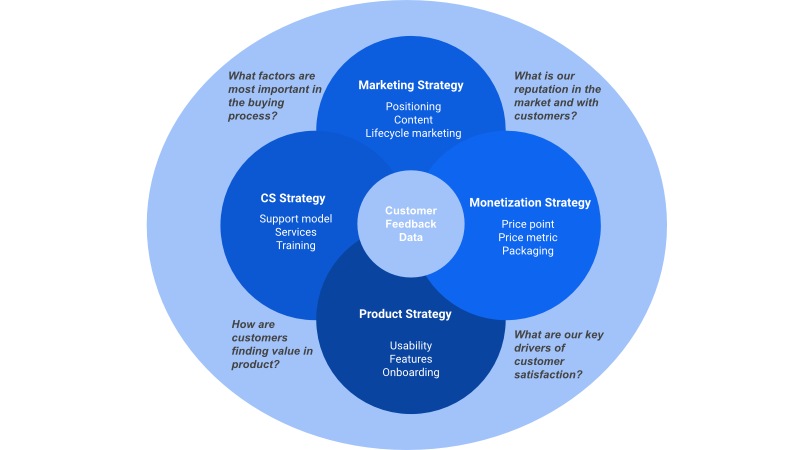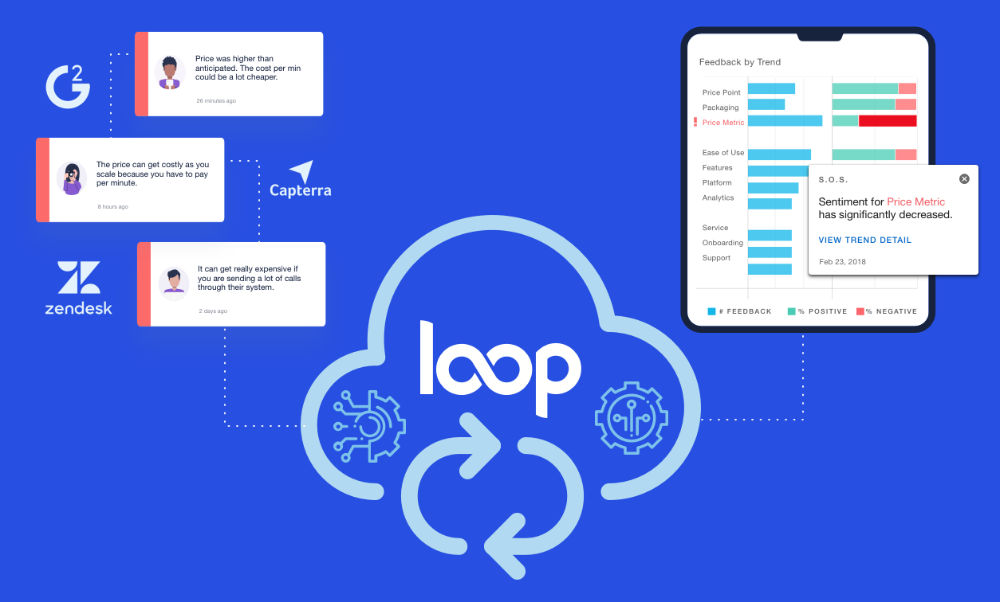Home » It’s Time to Shift to Customer-led Growth Strategies
It’s Time to Shift to Customer-led Growth Strategies

Lauren Culbertson
Co-founder and CEO, LoopVOC

Across B2B SaaS, many are pointing to the importance of implementing product-led growth strategies to ensure retention and revenue generation.
In simplest terms, product-led growth means prioritizing product usage as the primary driver of acquisition, retention, expansion.
And this type of shift makes sense. B2B buyer behavior insists that companies treat them more like consumers. We want self-education rather than talking to a sales rep and instant gratification by experiencing value firsthand.
Orchestrating this successfully requires excellent product experiences and continued innovation. Product usage data must be the driving force behind decision-making across the company, and companies must have a frictionless internal process to ensure this is successful.
But the reality is that there is friction at every cross-functional intersection. And without guidance on how to navigate that friction, product-led growth falls apart.
What if instead, we put the customer at the center of our growth?
If all stakeholders were on the same page about what customers need, if data didn’t live in silos, if marketing could see NPS feedback, if product teams could see win/loss interviews, if everyone had a common understanding of what is most important to the customer — what could that mean?
- Product + Marketing could create better roadmaps.
- Marketing + Success could create better retention offers.
- Sales + Marketing could create better positioning and messaging
- Customers could achieve value faster.

Why Customer-led growth is critical
If our purpose is to create products, services, and experiences for our customers – the most critical indicator of our performance is feedback from our customers. Yes, usage still matters. But we cannot continue to reserve customer feedback for quarterly surveys or advisory meetings.
Customer feedback has to be part of your culture. Understanding the why behind what is and is not working is the context we need to make impactful decisions.
What it means to focus on Customer-led growth
Customer-led growth unifies cross-functional teams around the needs of the customer. Rather than just focusing solely on product usage, customer-led growth focuses on a culture of collective responsibility for the customer experience.
Everyone from product to customer success to sales and marketing should have a relentless focus on using customer feedback to deliver better marketing, monetization, product, and experience strategies.
Customer-led growth requires a shift in company culture.
This is not about looking at single-channel feedback data. This is about the opportunity to listen to customers at every single touchpoint, and to see every conversation or interaction with a customer as an opportunity to understand more deeply what they need, want, and still desire from your products and services.
It’s not only about making the product better – it’s about optimizing every growth vehicle, from product to pricing to positioning and beyond.
Customer-led growth is the promise that the growth of your company is directly tied to the growth and success of your customers.
What it takes to move toward Customer-led growth
This isn’t about stopping everything you’re doing. This is about working smarter across your organization and aligning on customer value opportunities.
Leadership must be all-in.
This is about shifting culture. Rather than waiting to prioritize customer feedback when there is an issue, or when a team wants to understand how well they’re doing, customer feedback is the driving indicator of organizational success. It’s a daily priority and an ongoing process.
Silos have to be broken.
Certain teams may own the process or channel, but they do not own the feedback. Customer feedback is everyone’s responsibility. This means that there has to be sharing and visibility across the organization. Everyone is accountable and empowered.
Customer feedback is often reserved for NPS surveys or online reviews. But feedback is everywhere. Employees on the frontlines are having conversations with customers daily. Support tickets, CRM notes, website chats – all of these conversations and interactions are critical context into the customer experience.
Regular feedback collection, in one place. Feedback has to be analyzed and categorized to understand the feedback trends and sentiment across every touchpoint over time.
Teams have to be aligned on growth strategies.
Customer feedback data should be used to drive strategic action. This means that every team has to be aligned on the need to make changes, shift strategy, and reprioritize plans based on risks and opportunities identified.
This growth strategy requires constant checks and balances – is what we’re doing driving results for our company and our customers? Constant assessment is required and essential.
I think we can all agree that customer feedback is important, and that customer retention is critical to longterm, scalable growth. Shifting to Customer-led growth strategies seems obvious — putting the people we’re serving at the center of our strategies. We’re not guessing what they need or making assumptions about what they value. Instead, we’re making their feedback central to what we do and why we do it.



